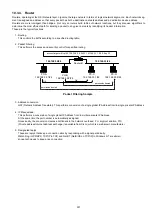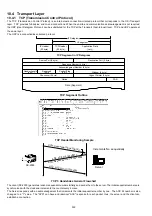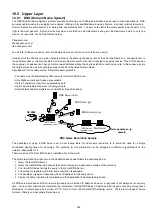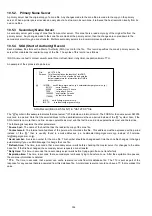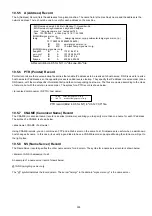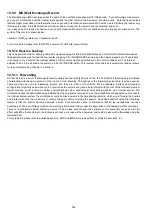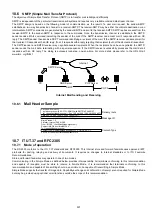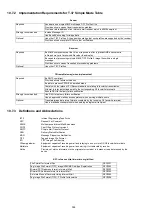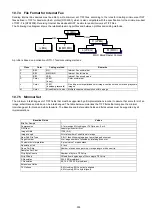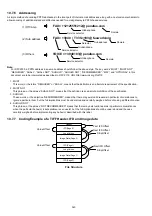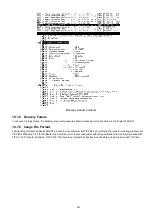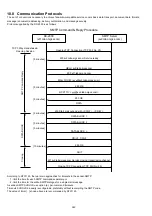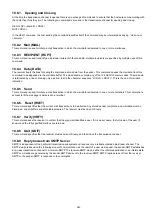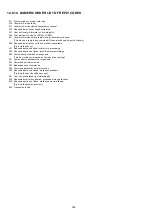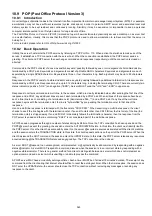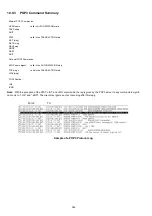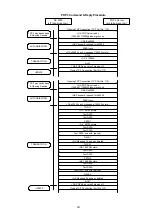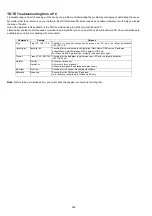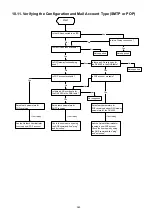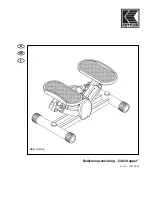
345
10.9 POP (Post Office Protocol Version 3)
10.9.1
Introduction
On certain types of smaller nodes in the Internet it is often impractical to maintain a message transport system (MTS). For example,
a workstation may not have sufficient resources (cycles, disk space) in order to permit a SMTP server and associated local mail
delivery system to be kept resident and continuously running. Similarly, it may be expensive (or impossible) to keep a personal
computer interconnected to an IP-style network for long amounts of time.
The Post Office Protocol - Version 3 (POP3) is intended to permit a workstation to dynamically access a maildrop on a server host
in a useful fashion. Usually, this means that the POP3 protocol is used to allow a workstation to retrieve mail that the server is
holding for it.
For more detail, please refer to URL of http:// www.imc.org/rfc1939
10.9.2
Basic Operation
Initially, the server host starts the POP3 service by listening on TCP Port No. 110. When a client host wishes to make use of the
service, it establishes a TCP connection with the server host. When the connection is established, the POP3 server sends a
greeting. The client and POP3 server then exchange commands and responses (respectively) until the connection is closed or
aborted.
Commands in the POP3 consist of a case-insensitive keyword, possibly followed by one or more arguments. All commands are
terminated by a CRLF pair. Keywords and arguments consist of printable ASCII characters. Keywords and arguments are each
separated by a single SPACE character. Keywords are three or four characters long. Each argument may be up to 40 characters
long.
Responses in the POP3 consist of a status indicator and a keyword possibly followed by additional information. All responses are
terminated by a CRLF pair. Responses may be up to 512 characters long, including the terminating CRLF. There are currently two
status indicators: positive ("+OK") and negative ("-ERR"). Servers MUST send the "+OK" and "-ERR" in upper case.
Responses to certain commands are multi-line. In these cases, which are clearly indicated below, after sending the first line of the
response and a CRLF, any additional lines are sent, each terminated by a CRLF pair. When all lines of the response have been
sent, a final line is sent, consisting of a termination octet (decimal code 046, ".") and a CRLF pair. If any line of the multi-line
response begins with the termination octet, the line is "byte-stuffed" by pre-pending the termination octet to that line of the
response.
Hence a multi-line response is terminated with the five octets "CRLF.CRLF". When examining a multi-line response, the client
checks to see if the line begins with the termination octet. If so and if octets other than CRLF follow, the first octet of the line (the
termination octet) is stripped away. If so and if CRLF immediately follows the termination character, then the response from the
POP server is ended and the line containing ".CRLF" is not considered part of the multi-line response.
A POP3 session progresses through a number of states during its lifetime. Once the TCP connection has been opened and the
POP3 @server has sent the greeting, the session enters the AUTHORIZATION state. In this state, the client must identify itself to
the POP3 server. Once the client has successfully done this, the server @acquires resources associated with the client’s maildrop,
and the session enters the TRANSACTION state. In this state, the client requests actions on the part of the POP3 server. When the
client has issued the QUIT command, the session enters the UPDATE state. In this state, the POP3 server releases any resources
acquired during @the TRANSACTION state and says goodbye. The TCP connection is then closed.
A server MUST @respond to an unrecognized, unimplemented, or @syntactically invalid command by responding with a negative
status @indicator. A server MUST respond to a command issued when the session is in an incorrect state by responding with a
negative status indicator. There is no general method for a client to distinguish between a server which does not implement an
optional command and a server which is unwilling or unable to process the command.
A POP3 server MAY have an inactivity autologout timer. Such a timer MUST be of at least 10 minutes’ duration. The receipt of any
command from the client during that interval should suffice to reset the autologout timer. When the timer expires, the session does
NOT enter the UPDATE state--the server should close the TCP connection without removing any messages or sending any
response to the client.
Содержание Panafax DX-2000
Страница 2: ......
Страница 27: ...27 9 1 Screw 19 10 Release two Latch Hooks 11 Remove the SNS Assembly 121 9 10 11 ...
Страница 49: ...49 2 15 Screw Identification Template ...
Страница 56: ...56 3 7 2 Printer Circuit 429 650 622 744 607 665 555 506 432 408 405 433 502 610 610 610 621 507 507 639 ...
Страница 57: ...57 3 7 3 Option Cassette Circuit 555 748 728 744 928 953 730 731 731 952 944 930 931 931 ...
Страница 58: ...58 3 7 4 LAN Control Circuit 522 CN50 1102 1104 1101 N C N C RD N C N C RD TD TD ...
Страница 59: ...59 3 7 5 Page Description Language Printer Interface Kit ...
Страница 287: ...314 B Supplies Order No Picture Description DZHT000004 Verification Stamp UG 3313 Toner Cartridge ...

